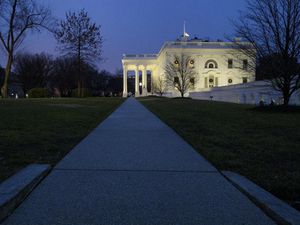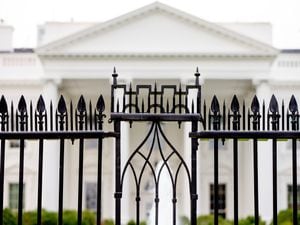Trump’s border wall pledge may not be fulfilled, says White House chief
The US president has cited a lack of funding for the border wall as the reason for shutting down the government.

Three confidants of Donald Trump, including his departing chief of staff, have indicated that the US president’s pledge to build a wall along the US-Mexico border will not be fulfilled as advertised.
Mr Trump’s promise to build the wall was a key part of his election campaign in 2016. More recently, he cited a lack of funding for a border wall as the reason for partially shutting down the government.
At times the president has also waved off the idea that the wall could be any kind of barrier.

However, White House chief of staff John Kelly told the Los Angeles Times that Mr Trump had abandoned the notion of “a solid concrete wall early on in the administration”.
“To be honest, it’s not a wall,” Mr Kelly said, adding that the mix of technological enhancements and “steel slat” barriers the president now wants along the border resulted from conversations with law enforcement professionals.
Along the same lines, White House adviser Kellyanne Conway called discussions of the apparent contradiction “a silly semantic argument”.
She told Fox News Sunday: “There may be a wall in some places, there may be steel slats, there may be technological enhancements.

“But only saying ‘wall or no wall’ is being very disingenuous and turning a complete blind eye to what is a crisis at the border.”
Senator Lindsey Graham, a South Carolina Republican who is close to the president, emerged from a Sunday lunch at the White House to tell reporters that “the wall has become a metaphor for border security”, and referred to “a physical barrier along the border”.
Mr Graham said Mr Trump was “open-minded” about a broader immigration agreement, saying the budget impasse presented an opportunity to address issues beyond the border wall.
However, a previous attempt to reach a compromise that addressed the status of “Dreamers” – young immigrants brought to the US as children – broke down last year as a result of escalating White House demands.
Mr Graham said he hoped to end the shutdown by offering Democrats incentives to get them to vote for wall funding and told CNN before his lunch with Mr Trump that “there will never be a deal without wall funding”.

Mr Graham proposed to help two groups of immigrants get approval to continue living in the US: about 700,000 young “Dreamers” brought into the US illegally as children and about 400,000 people receiving temporary protected status because they are from countries struggling with natural disasters or armed conflicts.
He also said the compromise should include changes in federal law to discourage people from trying to enter the US illegally.
“Democrats have a chance here to work with me and others, including the president, to bring legal status to people who have very uncertain lives,” Mr Graham said.
The partial government shutdown began on December 22 after Mr Trump bowed to conservative demands that he should fight to make good on his vow and secure funding for the wall before Republicans lose control of the House on Wednesday.
Democrats have remained committed to blocking the president’s priority, and with neither side engaging in substantive negotiation the effect of the partial shutdown looks set to spread and to extend into the new year.





